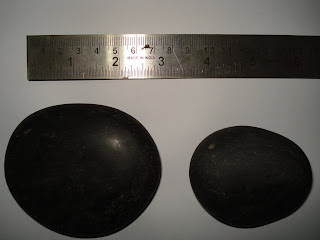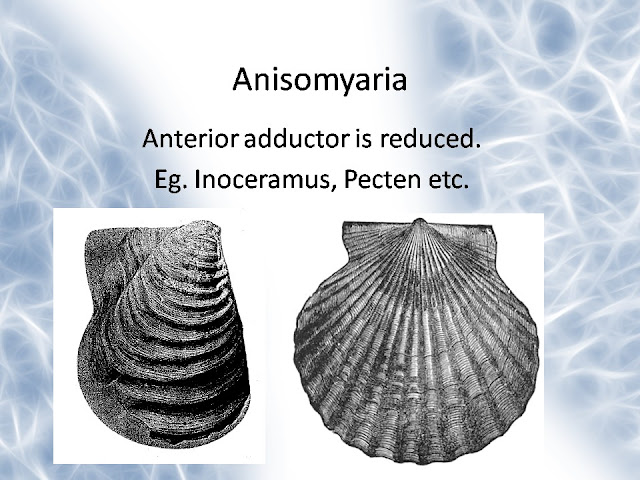Geology Rocks!!!
God created earth, whisked it with tectonics, stuffed it with rocks, filled it with water, baked it with volcanoes, boiled it with geysers and topped it with mountains. Now it's our time to relish on the dish. -RP
Thursday, September 20, 2012
Sunday, July 15, 2012
Tuesday, February 8, 2011
Jhamar Kotda Rock Phosphate mine


Purpose:To study the method of excavation in open-cast mines and to see how rock phosphate is excavated.
Location: 20 km from Udaipur
Mineral Excavated: Rock Phosphate and apatite
Machinery Used: Crane, Shovel, Drill Machine, Jack Hammer, Dumper, Dozer,
Process:Firstly, the excavated mineral is graded on the basis of the stromatoliteΘ content.Below 30 % is graded as low grade and above 30% is graded as high grade ore.After excavation, this ore is transported to the crushing plant where it is put in the hopper from where it goes to the jaw crusher where it is crushed and then to the impactor where fine crushing takes place. Then this ore is screened and uncrushed material is sent back in the process.
Rock Phosphate the final product of this mine is the primary product for the fertilizer industries. Out of the 100% requirement of our country, 20 % is produced in India.80% of India’s production of Rock Phosphate comes from this Mine. It is one the largest mines in Asia. Its stroke line is about 16 km. and the mineral shows a dip of 55۫ towards north. This mine is divided into 8 blocks started in 1968 having a reserve of 50 million tons presently owns a reserve of 18 million tons. There are three plants for crushing, two for high grade and one for low grade ore. The highest percentage of phosphate amongst the ore is 40%.The output sent for fertilizer industries is 31.5%.Stromatolites of this mine are present in three forms with respect to their formation. These are fossils of blue-green algae which helped in deposition of phosphate.
Sunday, December 6, 2009
Basanite : Man's Oldest Friend In Assaying Precious Metals.



Basanite or more commonly referred to as Lydian stone, touch stone, lydite or kasauti, is an igneous, volcanic (extrusive) rock withaphanitic to porphyritic texture.
Not to be mistaken with Bassanite which is a saline evaporate consisting calcium sulphate, found at Vesuvius, Italy.
Minerology: The mineral assembly is usually abundant feldspathoids (nepheline or leucite),plagioclase, and augite, together with olivine.Clinopyroxene (augite) and olivine are common as phenocrysts and in the matrix. Quartz is absent, as is orthopyroxene. Some basanites have been the source of sapphires or rubies.
Texture: Aphanitic to porphyritic texture. The rock is hyalopilitic in thin section texture.
Configuration: Chemically, basanites are low in silica (42 to 45% SiO2) and high in alkalis(3 to 5.5% Na2O and K2O) compared to basalt, which typically contains more SiO2. Unlike basalts, basanites are rich in olivine minerals.
Whereas Basalts are extrusive igneous rocks that are that are low in silica content, very dark in color. They are the most common type of rocks in the Earth's crust and they make up most of the ocean floor.
Mineralogy: The mineralogy of basalt is characterized by a preponderance of calcicplagioclase feldspar and pyroxene. Olivine can also be a significant constituent. Accessory minerals present in relatively minor amounts include iron-oxides and iron-titanium oxides. Because of the presence of such oxide minerals, basalt can acquire strong magnetic signatures as it cools, and paleomagnetic studies have made extensive use of basalt.
Texture: Aphanitic to porphyritic texture. The rock is Ophitic in thin section.
Table comparing Basalt and Basanite Rock Chemistry.
Oxide | Basanite | Basalt |
SiO2 | 44.3wt% | 45-55 wt% |
TiO2 | 2.51 wt% | 0.5-2.0 wt% |
Al2O3 | 12.8 wt% | 14 wt% |
FeO | 11.4 wt% | 5-14 wt% |
MgO | 11 wt% | 5- 12 wt%. |
CaO | 10.5 wt% | 10 wt% |
Na2O + K2O | 5.65 wt% | 8 wt% |
Basanites occur both on continents and on ocean islands. For example, together with basalts, they are produced by hotspot volcanism.
Uses:- Basanites are highly resistant to corrosive acids viz. nitric acid, sulphuric acid and aqua regia, because of this quality Basanites prove themselves very useful in chemical analysis of jewelry. Their abrasive nature helps in making a streak of the metal to be assayed and their dark color is of contrast to the streaks of gold, silver and platinum etc.
For assaying the purity of a metal, first a streak of the metal is made on the stone, and then the streak is made to react with acid solution of 78.4% nitric acid, 1.6% hydrochloric acid and 20% water, which is applied carefully with the help of a glass rod. The following results are obtained for respective metals.
Ø Gold (Pure):- No change because no reaction occurs. (Golden Streak Intact).
Ø Gold (Impure/Alloyed):- The acid solution dissolves the impurities (possibly copper and silver) leaving the gold streak intact. The amount of pure gold in the alloy can be estimated by analyzing the amount of streak washed away.
Ø To Distinguish between Silver and Platinum: - Same as above for gold the acid dissolves Silver but doesn’t react with Platinum.
The method stated above is not as accurate as fire assay but is the most prevalent method to assay gold items of unknown quality and configurations.
Discovered by the Egyptians this was used as the first method of assaying gold and was used at least as early as 500 BC.
Saturday, September 19, 2009
Presence of collumnar stromatolites in Jhamarkotra.

Probably the earliest forms of life evidences available Stromatolites are of great economic importance too. Stromatolites are the fossils of cyanobacteria aka blue-green algae, in the case of jhamarkotra of species Collerici columnaris. These stromatolites occur in a dolomitic matrix. Economically this fossil is known by the name of phosphorite or more commonly rock-phosphate as these are rich in phosphate content as these alga fix phosphates from their surrounding environment. Their presence also indicates marine palaeo-environment. As photography in this mine is strictly prohibited this photograph hails from Stromatolite Park Jhamarkotra Raj. Age -Lower Proterozoic.
Amygdaloidal Structure seen in Basalts Isarthuni Ratlam.

 Igneous Rocks can be of two types extrusive and intrusive . Extrusive rocks come out from inside of the earth and cool down on the surface therefore has very less time for formation of crystals. As the gases stored inside the magma have no time to escape out they form voids inside the rock mass, later these voids are filled with secondary depositions forming amygdaliods and the rock thus formed is said to have a amygdaloidal structure.
Igneous Rocks can be of two types extrusive and intrusive . Extrusive rocks come out from inside of the earth and cool down on the surface therefore has very less time for formation of crystals. As the gases stored inside the magma have no time to escape out they form voids inside the rock mass, later these voids are filled with secondary depositions forming amygdaliods and the rock thus formed is said to have a amygdaloidal structure.




































